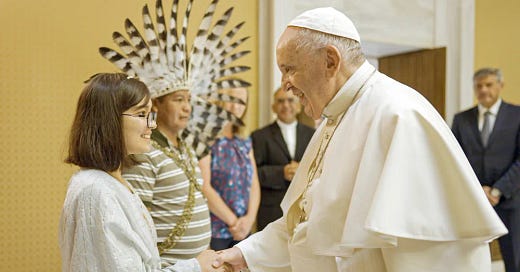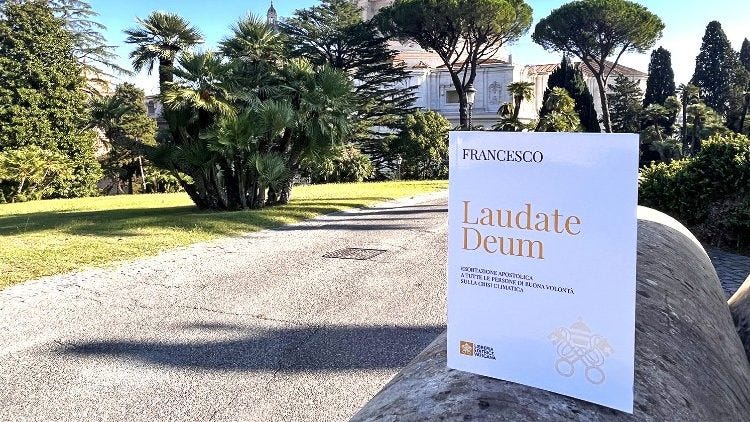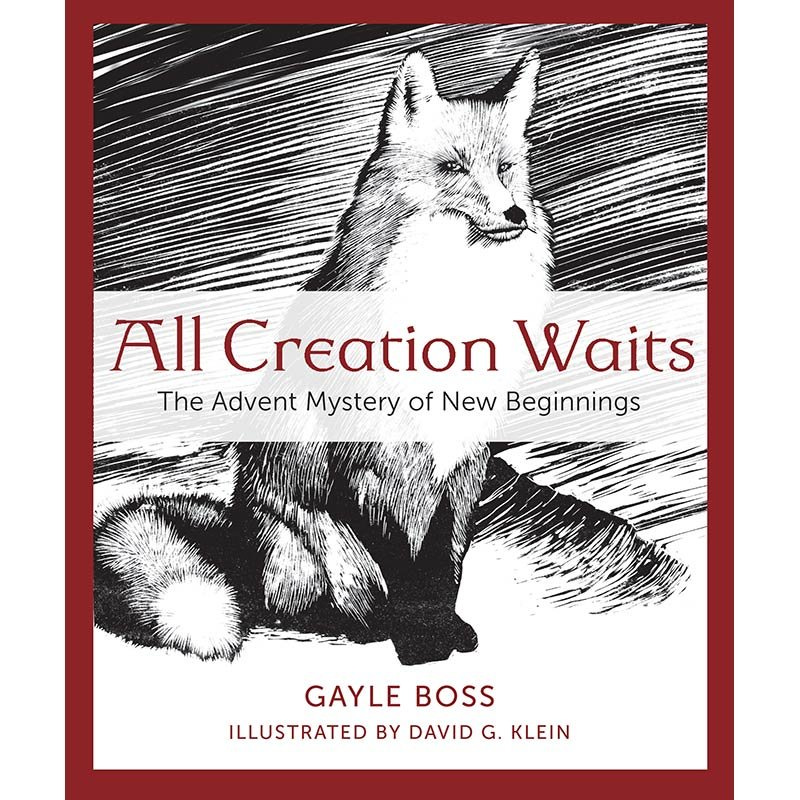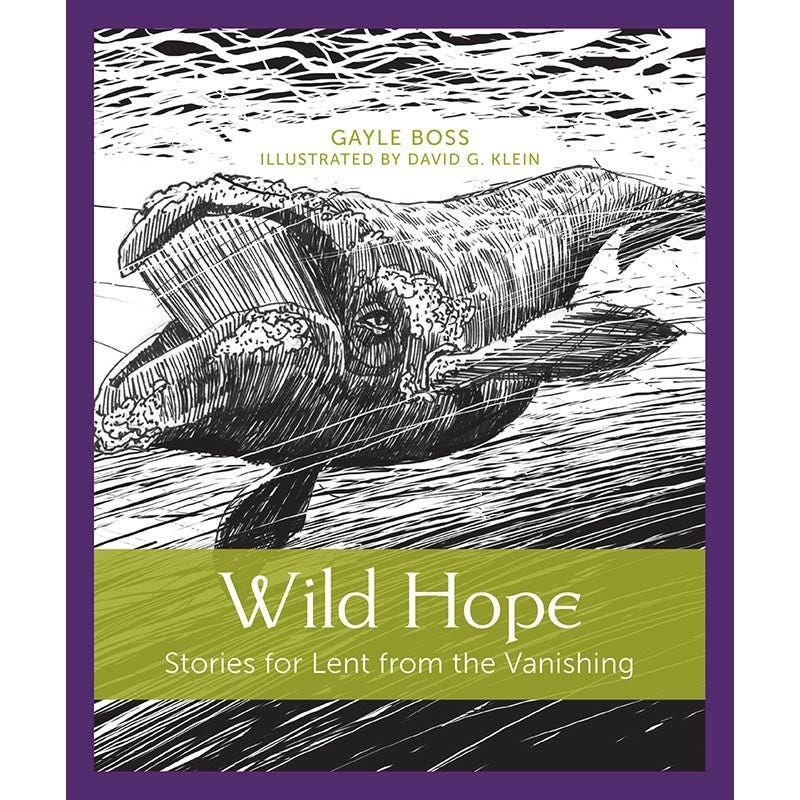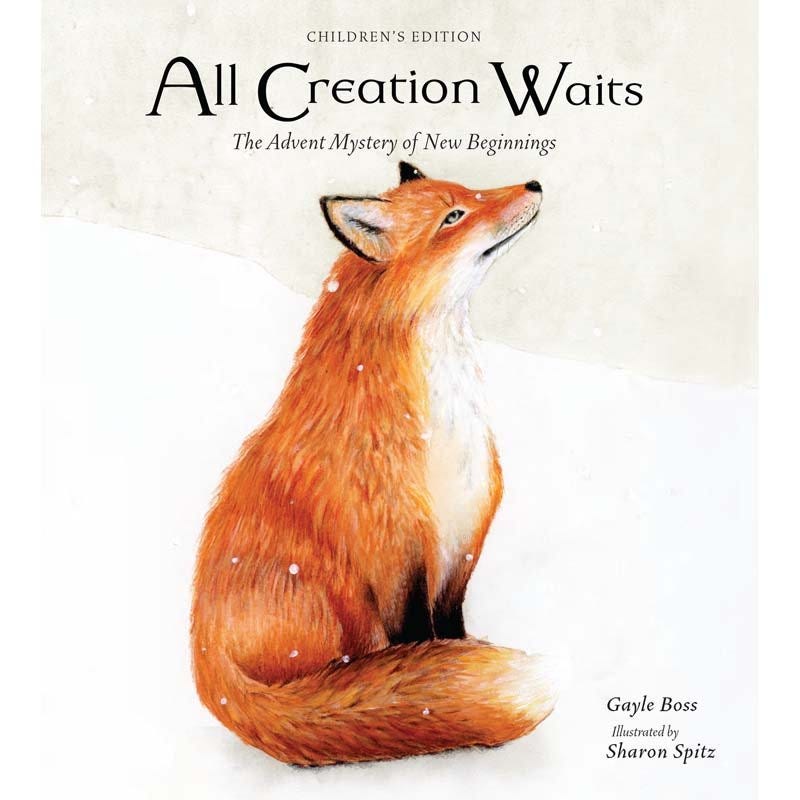Refugia Newsletter #51
Pope Francis's new letter, PRRI study on religion and climate, coal site refugia, and books for Christmas
Refugia News
After that beautiful week in the Adirondacks, I’m back in the groove at home, teaching and grading—and more grading. Alas, I have piles of student work to catch up on.
Some of that grading has to wait while I do a little speaking. I had the honor of talking with the staff of the Episcopal Church Foundation on Wednesday, and today, I will be speaking at the Lilly Fellows Program National Conference. The conference gathers Christian faculty from numerous universities to ponder the theme “Contemplating Integral Ecology for the Common Good.”
One sweet moment from my teaching week to share with you: I had my Core 100 students (all first-year students) watch The Letter: A Message for Our Earth and then discuss it together for their “exam” in the course (it’s a half-semester course). The students were so engaged with the film, moved, inspired. It was lovely to see.
Have you seen the film? It’s an extremely well-done 2022 documentary about the Vatican inviting a small group of people from different continents and religions (or no religion) to represent the voices of the poor, the indigenous, the young, and the creatures—all as a kind of embodied follow up to the call in Laudato si’ to global cooperation and hearing the voices of all people and all creation. My students declared the film an excellent “gateway” for people who haven’t thought much about climate. It makes climate impacts real in the stories of these people’s lives, and the bond they create with each other models what’s possible when humans are empathetic and committed to living gently in our “common home.”
Pope Francis greets Ridhima Pandey, a youth activist from India. Image credit: EarthxTV
This Week in Climate News
Time for more Pope-related news. As promised, I’ve now read Pope Francis’s recent letter along with some commentary on it. In my last newsletter, I referred to Laudate Deum, released October 4, as a new encyclical, but that was wrong! It’s an “apostolic exhortation.” I apologize. I’m not Catholic, so these distinctions don’t come naturally to me. I’m learning.
In this new letter—a slim 73 paragraphs compared to Laudato si’s 246—the Pope reiterates themes from the 2015 major encyclical. One can sense the Pope’s compassion for those suffering from climate impacts along with his impatience with those who cling to power and wealth at the expense of others. Since Laudato si’ appeared, the Pope writes, “I have realized that our responses have not been adequate, while the world in which we live is collapsing and may be nearing the breaking point.”
The sections of the letter provide feisty and concise commentary on a series of topics, including
direct refutation of climate deniers and their typical arguments
a dose of climate science
a critique of the “technocratic paradigm” that worships unlimited growth
a critique of the human love for power: “We need lucidity and honesty in order to recognize in time that our power and the progress we are producing are turning against us.” “To the powerful, I can only repeat this question: ‘What would induce anyone, at this stage, to hold on to power, only to be remembered for their inability to take action when it was urgent and necessary to do so?’”
a call for a new attitude of humility and kinship with the planet: “Let us stop thinking, then, of human beings as autonomous, omnipotent and limitless, and begin to think of ourselves differently, in a humbler but more fruitful way.”
championing of “multilateralism,” by which he means working together in new ways, not just through established institutions and governments, which have failed to move quickly enough
critique of COP meetings and a skeptical call to make COP28 actually effective
and finally, some rather pointed critiques of the indifferent rich, including naming the U.S. as a kind of worst offender, with our “irresponsible lifestyle connected with the Western model.”
Yikes. As with Laudato si’, I find the Pope’s directness bracingly refreshing. And convicting, even though I’m already convicted.
Image credit: vaticannews.va
Meanwhile…. pair the Pope’s recent letter with this quietly scathing essay by Emily Atkin, author of the newsletter Heated. For Indigenous People’s Day, Atkin reposted an essay she wrote in 2021, suggesting that the most famous American billionaires are like Columbus: they are sinking their money and influence into essentially exploitative technologies as “solutions” to the climate crisis. Atkins wrote:
America’s modern-day Columbuses (Columbi?) are widely celebrated for their endeavors. But Indigenous climate activists know colonizer mentality when they see it. Musk, Bezos, and Gates believe the natural world can be bent to accommodate humanity’s existing behavior—and they are obsessed with doing the bending. Conversely, they are fairly disinterested in changing behavior to accommodate the natural world. Boring!
Why do we listen to billionaires? Because we are unduly impressed with money, essentially. We assume that because billionaires are billionaires, they are somehow smarter than the rest of us. This is patently untrue. As I tell my students, the people with the most power are not necessarily smart, or wise, or good. It’s just a truth about the world one has to face. Atkins spoke more recently with New Zealand-based conservationist Joseph Merz, and she reports his comments on this phenomenon:
It’s not that billionaires are the smartest, Merz argues—it’s that they’re the best at using the system of capitalism to their own personal advantage. So it shouldn’t surprise us when their solutions to the world’s biggest problems preserve the status quo that keeps them at the top. “These people have made their money through capitalism and through technology, so the odds are, their solutions to everything will involve capitalism and technology,” he said. “And that’s exactly what we’re seeing around the world right now.”
Two more recommendations from my recent reading/viewing/listening.
First, this interview in The New Yorker with Al Gore, by David Remnick. Gore is not messing around, calling out the fossil fuel industry, deploring political stagnation, naming a passel of absurdities and insanities. It’s a good read that is, ultimately, rather encouraging. Here’s a taste:
Aren’t we losing the race [to mitigate and adapt to climate change] miserably?
I would define it in different terms. Yes, we are. The crisis is still getting worse, faster than we are implementing the solutions. However, we are gaining momentum, and we’re gaining momentum so rapidly that I’m convinced we will soon be gaining on the crisis itself.
For another combination of bracing honesty with hopeful good news, I also recommend this new TED Talk from the incomparable Hannah Ritchie, a Scottish data scientist who writes the newsletter Sustainability by Numbers. If you love graphs and charts, you’ll love Ritchie’s analysis.
Deep Dive
I’m afraid we’ve got to process the newly released study by PRRI on religion and attitudes about the climate crisis. Unfortunately, this study confirms what a 2022 Pew Research Center study found: In the U.S., religion tends to get in the way of climate realism and action. Religious leadership structures release statements and religious people talk a good game about “creation care” and “stewardship,” but the average faithful don’t know much or act much on climate. Obviously, this is a statistical generalization; here are some details.
First, a summary of the study’s scope:
This report covers Americans’ assessments of the threats of climate change, how it affects their lives and voting behavior, and what steps they are willing to take to combat climate change, with particular focus on the impact of religion on such views. We also consider how partisanship, media trust, race and ethnicity, generation, and education are linked to climate change attitudes. Furthermore, we explore Americans’ spiritual connections to the earth and reasons why they support taking action to protect the environment.
What did they find? Let’s start with this graphic:
What you see here is that the less religious an American is, the more realistic that person is likely to be about the actual climate facts. The more religious: the less realistic. Sigh. Here’s the summary of this finding:
As importance of religion wanes, belief that climate change is caused by humans increases. Among Americans who say that religion is the most important thing in their lives, 39% say that climate change is caused by humans, compared with 56% of those who say religion is one among many important things, 65% who say religion is not as important, and 78% who say religion is not important.
I highly recommend taking a look at the full study and the other resources provided. Here’s a link to the webinar on the findings. Here’s a link to a pdf of just the slides from the webinar: super helpful and quick to click through. For a very quick overview, you can also read this article in Inside Climate News by Kristoffer Tigue.
How do you process all this? How does this reflect—or not reflect—your faith community?
Refugia Sighting
Thanks to friend and reader Dan Terpstra for alerting me to this article about refugia spaces in former coal mining sites. The story, written by Katie Myers in Grist, beautifully illustrates nature’s persistent efforts to create refugia, as well as the way people are learning from these pockets of life.
You’ve heard of mountain-top removal coal mining in Appalachia. Well, many of those former sites remain in terrible shape, but in a few places, life is reasserting itself:
Much of this land is a quagmire of erosion, water pollution, and other problems, yet some of it is slowly being taken back by the forest. It may be ill, but it certainly is not dead, and is in many cases surprisingly alive, as scientists have found over decades of studying the reforestation and recovery of mined lands.
A group of local scientists and advocates in Virginia has been studying ruined sites and has discovered—yep—refugia:
Not only has the natural world crept back into many of these places, but so too has a multiplicity of flora and fauna, including rare and endangered species. The green salamander, currently under consideration for inclusion on the federal endangered species list, turned up in several locations in Wise County, Virginia, for instance. On another site, mined three or four decades ago, Smith’s team found mammalian diversity higher than in some parts of the surrounding forest, especially where wetlands had formed or been constructed.
The group is urging all stakeholders to work with the areas that are healing themselves in order to promote further healing, rather than create new forms of ecological damage. It’s tempting for some corporate land owners to consider these sites perpetual sacrifice zones. The group isn’t arguing against any development, but instead urging “sustainable development that brings underserved members of the impacted communities into planning processes earlier and more often than currently required.”
Image credit: Mario Tama/Getty Images/grist.org
The Wayback Machine
For this feature today, I’d like to highlight three beautiful books by my friend Gayle Boss, two older and one brand new. All three of these books would make excellent Christmas gifts for anyone, but especially for families with children or for teachers.
Gayle’s 2016 book was All Creation Waits: The Advent Mystery of New Beginnings. Meant to be read one chapter per day during the season of Advent, this lovely book features 25 creatures native to the U.S. Midwest, describing in brief, poetic meditations how each creature prepares for the winter ahead. The spiritual implications are lovingly drawn: what does it mean to slow down and rest, attentive to God’s work in the world? The theme of the book: “The dark is not an end, but a door. This is how the new beginning comes.” Each chapter is illustrated by David G. Klein.
That book did so well that Paraclete Press asked Gayle to write the next one: Wild Hope: Stories for Lent from the Vanishing (2020). This one uses a similar format, but focuses on 25 globally endangered species as a way of entering into lament during the season of Lent.
Well, that book did so well, that Paraclete has now released a lovely hardcover gift edition of All Creation Waits, as well as the brand new picture book version, ready for Christmas gift-giving to a child or teacher you love. This one is illustrated in color by Sharon Spitz. Gayle has compressed the original prose into lovely, lively poems for each creature. A treasure.
Do you have good suggestions for holiday gift giving? Let us know!
That’s all for this week. Whatever might be weighing on you this time of year, I hope that you find many refugia where life persists. Be well.

